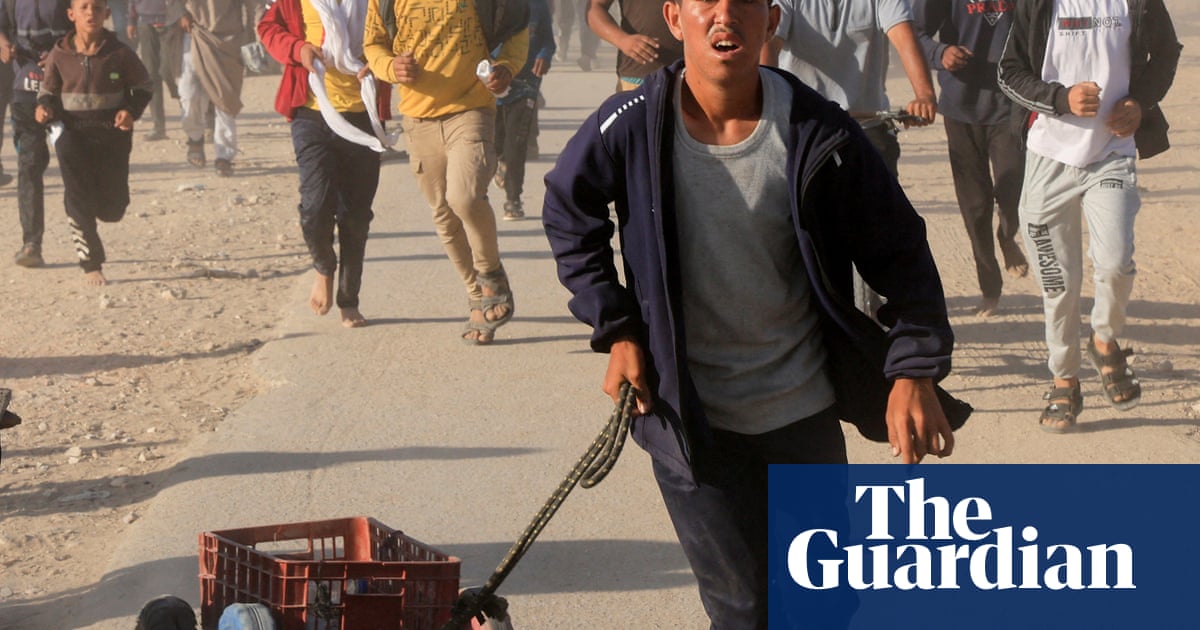Escalating Humanitarian Crisis in Gaza: Hundreds Killed While Seeking Aid Amid Deepening Famine

The humanitarian situation in the Gaza Strip has reached a catastrophic level, with reports indicating that hundreds have lost their lives while waiting for desperately needed food aid. Since May 27, an alarming 583 Palestinians have been killed and approximately 4,186 injured during aid distribution processes that are run by the Gaza Humanitarian Foundation (GHF), an organization supported by both Israeli and U.S. interests, according to the Gaza Strip’s Ministry of Health.
The violence has unfolded against a backdrop of looming famine, as the over 2.1 million residents of Gaza face severe food shortages. The dire circumstances have been compounded by depleted markets, a critical lack of clean water, and sporadic aid deliveries that often prove perilous and chaotic.
In the initial eight days after the GHF commenced operations, which focus on distributing aid via a limited number of sites, more than 100 individuals lost their lives due to gunfire from Israeli forces. Al Jazeera’s correspondent, Hani Mahmoud, reporting from Gaza City, noted that the GHF currently stands as the primary source of food for the beleaguered population, as Israel continues to impose stringent restrictions on aid from other humanitarian organizations.
“Many individuals are hesitant to approach the GHF’s distribution centers due to the inherent dangers associated with them, particularly the ongoing and deliberate shootings targeting aid seekers,” Mahmoud explained. “However, refraining from these centers is not a solution, as it means children will go to bed hungry without food parcels.”
Previously, the United Nations operated around 400 aid distribution sites throughout the Strip, but the GHF has drastically reduced this number to just four large distribution centers, or “mega-sites.” Three of these sites are located in southern Gaza, with one in the central region, leaving the critically affected northern areas without access to aid.
The GHF centers often operate on an irregular basis, with some locations opening for as little as one hour. In one troubling case, a site announced its opening on social media, only to declare a mere eight minutes later that all supplies had been depleted. This approach often results in chaotic scenes, where desperate crowds clash for the meager resources available.
Accessing these distribution sites can be perilous for many, as residents may need to traverse active combat zones, navigate through biometric checkpoints, and carry heavy loads back home. This system effectively marginalizes the most vulnerable populations, including the elderly, injured, and disabled individuals, who lack the physical ability to undertake such treacherous journeys.
The contents of the aid boxes themselves are grossly inadequate. The World Food Programme recommends a daily caloric intake of 2,100 calories per person, yet Israel has restricted aid to just 1,600 calories. Although GHF boxes provide about 1,750 calories, they fall significantly short of essential nutritional needs and do not include critical items such as clean water, medicine, blankets, or fuel. For many families, receiving a box becomes a rare stroke of luck rather than a sustainable solution.
Al Jazeera correspondent Hind al-Khoudary reported that the food rationing offers little hope for long-term sustenance, noting that a typical GHF box might contain merely 4kg (8.8lb) of flour, a few bags of pasta, two cans of fava beans, a pack of tea bags, and some biscuits. Occasionally, the boxes include lentils and small portions of soup mix, but the quantities remain woefully insufficient.
An alarming report from Israel’s Haaretz newspaper, citing unnamed Israeli soldiers, indicated that troops received orders to fire on crowds of Palestinians, utilizing excessive force against individuals who posed no threat. One soldier recounted, “We fired machine guns from tanks and threw grenades,” revealing the chilling reality of the situation.
Prior to the onset of the current conflict on October 7, 2023, Gaza saw the entry of around 500 trucks of humanitarian aid daily; however, this figure plummeted to less than 80 trucks per day following intensified Israeli military actions. In March, a near-total blockade on supplies was enforced, halting aid deliveries entirely.
The GHF assumed control over aid operations on May 27 as a private contractor, implementing a new delivery system that diverges from traditional United Nations frameworks. Formed earlier this year in the United States, the GHF has been characterized by some media outlets as part of a broader strategic plan initiated by Israel to influence Gaza’s future.
Despite claims of securing $100 million in funding, the GHF has not disclosed specific sources of its financial backing. Recently, the U.S. Department of State allocated $30 million in support, yet the lack of transparency raises concerns among humanitarian observers.
The impact of the food crisis on Gaza’s children has been particularly alarming. UNICEF has reported a troubling rise in child malnutrition, stating that in May alone, over 5,119 children between the ages of six months and five years were hospitalized due to acute malnutrition. This represents a nearly 50 percent increase from April and a staggering 150 percent surge compared to February when temporary ceasefires allowed for increased aid access.
UNICEF’s regional director for the Middle East and North Africa, Edouard Beigbeder, emphasized that these cases are wholly preventable and attributed the dire situation to systematic blocks preventing necessary food, water, and nutritional treatments from reaching the children in need. He stated, “These are man-made decisions that are costing lives.” Notably, children have been victims in over half of the 19 documented deadly incidents linked to food aid distribution, highlighting the extreme vulnerability faced by Gaza’s youngest residents.
As the situation continues to deteriorate, reports indicate that one in five Palestinians within the Gaza Strip is now facing starvation due to Israel’s ongoing aid blockade. The chaos surrounding aid distribution points starkly illustrates the devastating level of hunger gripping this region. The latest Integrated Food Security Phase Classification (IPC) report reveals that 1.95 million people, representing 93 percent of Gaza’s population, are experiencing acute food shortages, with certain areas, particularly in the north, suffering even deeper levels of hunger.
According to the IPC, the continued blockade enforced by Israel “would likely result in further mass displacement within and across governorates,” as essential supplies necessary for survival continue to dwindle.





























